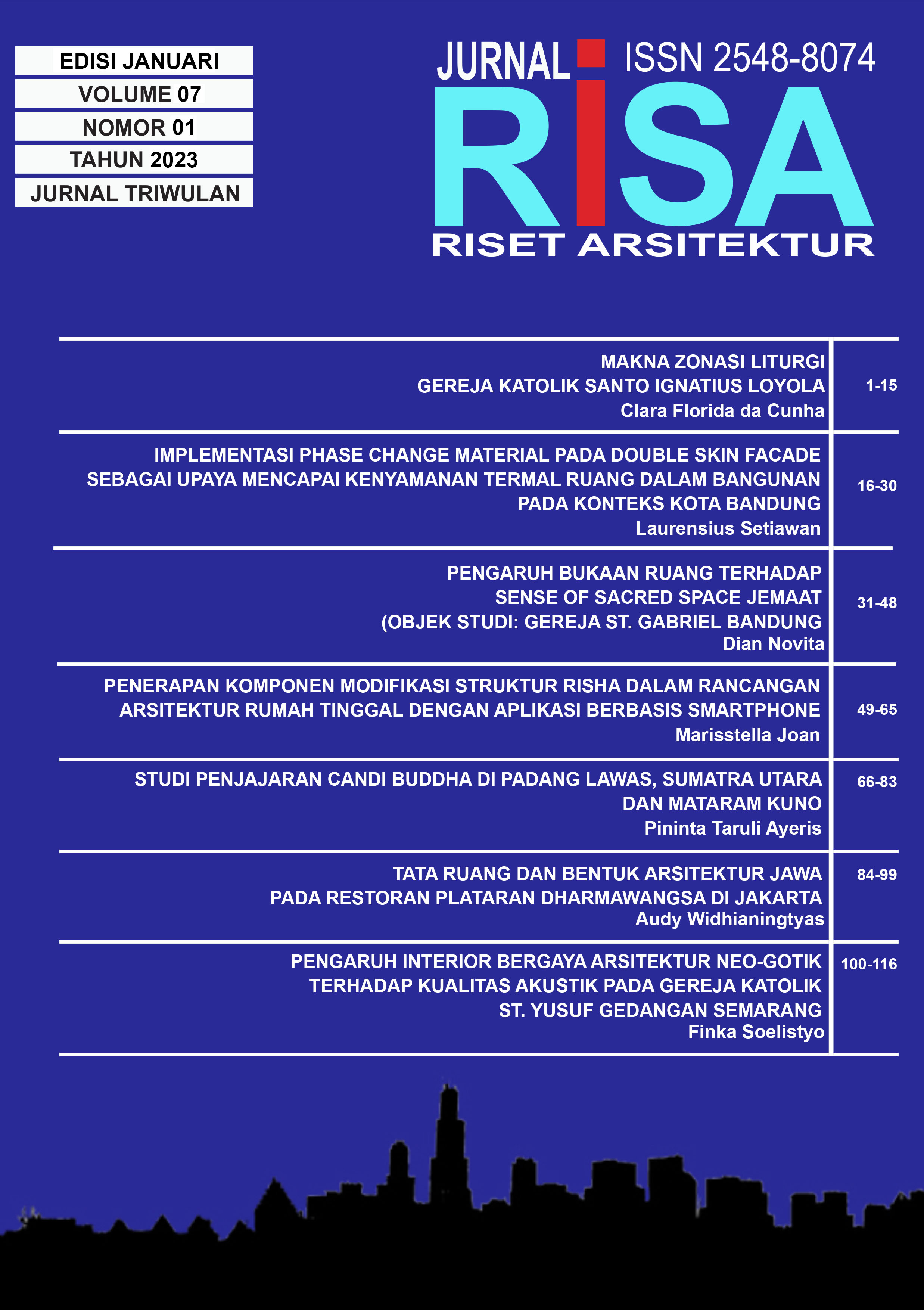ALIGNMENT STUDY OF THE BUDDHIST CANDI AT PADANG LAWAS, SOUTHERN SUMATRA AND ANCIENT MATARAM
DOI:
https://doi.org/10.26593/risa.v7i01.6362.66-83Abstract
Abstract - Temple architecture or candi architecture is one of the oldest architectures found in Indonesia also the world, the word ‘candi’ comes from the word candika grha which means the house of the goddess of death, but Soekmono (1977:231) said that the temple isn’t always considered a tomb, rather a temple building. The Padang Lawas Buddhist temples that were taken as research objects consisted of Bahal Temples I, II, III and Sipamutung Temple, juxtaposed with the Buddhist temples of Ancient Mataram, Central Java. The architectural elements of Padang Lawas Buddhist temples have unique architectural patterns and are different from the architecture of Javanese Buddhist temples in general. Construction estimated, from the 9th - 13th centuries for the architecture of temples in Sumatra are also supported by the fact that Srivijaya Kingdom in Sumatra, was the earliest centre of the spread of Buddhism (4th century) before Ancient Mataram. Architecture of the Buddhist temples of Padang Lawas and throughout Sumatra does not yet have clear characteristics when compared to Javanese temples, which have guidelines and characteristics that have been studied more vastly. Sumatra’s candi architecture is unique, portraying a different image from the temples in Java, thus this reason is used as a research study of the alignment study between the Buddhist temples of Padang Lawas and Ancient Mataram (Mataram Kuno). This study is done to understand the differences and similarities of the temple architecture built in different areas and the factors that influence the similarities and differences of temple architecture.
Architectural data of the Buddhist temples of Padang Lawas and Ancient Mataram based on the research objects that have been mentioned with research with a descriptive-analytic qualitative approach. The architectures of the Buddhist temples of Padang Lawas and Ancient Mataram are aligned to analyse the similarities and differences with the different theories referred from various literatures, books, research paper, and digital data. Sameness, differences, and similarities are analysed from its massing composition, spatial composition, silhouettes or figure, and ornamentation. Thus, influenced by certain factors that give certain uniqueness of its architecture. In this study the factors are derived from natural factors that affect temple architecture, material and engineering factors in relation to its nature, religiousity factors affecting architectural patterns, and socio-cultural-political factors. The conclusion of the analysis is there are many similarities and differences between the Sumatran and Javanese temples within their architectural elements, consisting of mass , space, building figures, and decoration & ornamentation. Few sameness are found, nevertheless many similarities or resemblance are also found and made possible by the absorption of Javanese’s style on Sumatra’s ‘candi’ architecture which was developed based on local wisdom, religiosity, nature, materials and engineering factors. Besides the sameness and similarities, various differences are also found on the architectural elements following its external factors consisting of religiousity, environment-material-technicality, and social-culture-politics.
Keywords: Candi Architecture, Buddha, Padang Lawas, Architectural elements
Additional Files
Published
Issue
Section
License
Copyright (c) 2023 Pininta Taruli Ayeris

This work is licensed under a Creative Commons Attribution-NonCommercial-ShareAlike 4.0 International License.












